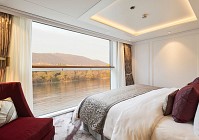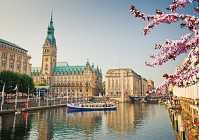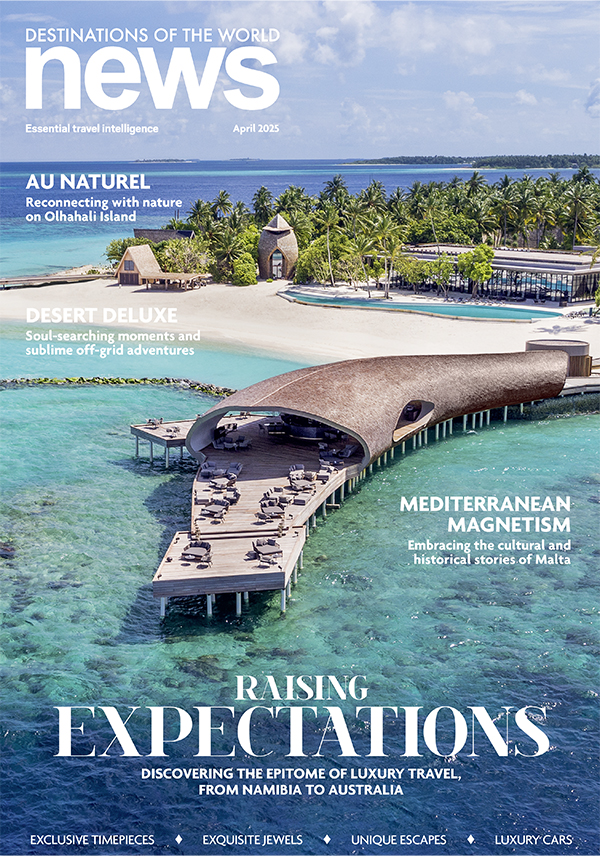Amidst its innumerable stoic spires, century-old angular brick buildings and post-modern glass façades, the storied city of Hamburg is abuzz with 1,500 years of history. The affluent port is Germany’s second largest city, permeated by the river Elbe, and strewn with more bridges than Venice, linking luxury retail avenues to grungy neon nightspot, the Reeperbahn, and back again to the tranquil Inner Alster Lake at the heart of the city.
While the northern German enclave has been described as “the southernmost Scandinavian city”, Hamburg has more of an affinity for its island neighbour, the UK. Britain’s Anglo-Saxon heritage was largely forged by migrants who came from the ancient ports of northern Germany, but Hamburg has inherited more traits from its ancient diaspora in the modern era. The Germanic northerners share a sardonic sense of humour with the self-deprecating Brits, but the influence extends even to the late Victorian and Georgian architecture prevalent in many of the lush, tree-lined suburbs, home to some of the city’s estimated 1,500 millionaires. Given the state is bloated with mega corporations like Google, Siemens and Philips, it’s hardly surprising that a generous handful of billionaires call Hamburg home.
Despite attracting white-collar wealth, the city’s lifeblood has always been its port. Since Charlemagne (Charles I) erected a castle there over a millennium ago, the mouth of the River Elbe has welcomed merchants from around the world, building a gateway from northern Europe to the world. The city is currently striving toward a 2025 Port Development Plan, with innovative sustainability policies and improved infrastructure, but a thousand years before Dubai, Hamburg exploded with prosperity by slashing trade duties and welcoming blue-collar sailors from across the globe, thirsty for respite and revelry. Therein lies this destination’s dichotomy.
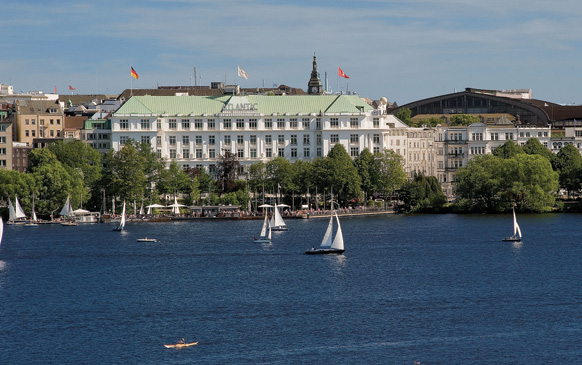
Don’t fear the Reeperbahn
It was the constant tide of foreign visitors who helped spawn the Reeperbahn in the St. Pauli district, the iconic neighbourhood that remains today. So named from the ropes that were woven here, “Rope Street” began to cater to nautical thrill-seekers from the 17th century onwards. The devil made work for idle sailors along “the sinful mile” for centuries, until the Nazi regime put the kibosh on illicit activities in the 1930s. Hamburg’s Chinatown was simultaneously lost, as the fascists rounded up the city’s Chinese expats into nearby concentration camps.
But the vibrancy returned decades later with the help of a more British invasion. It was in 1962 when Hamburg unwittingly welcomed Liverpudlian upstarts, The Beatles. The arrival of the Fab Four simultaneously quickened the band’s rise toward stardom and sealed the Reeperbahn into pop culture history as a touring hub for unsigned and fledgling musicians.
“I might have been born in Liverpool, but I grew up in Hamburg,” John Lennon famously said, after playing several clubs in the former red-light district. Now the vibrant, neon-lit nightspot invites a classier clientele, boasting the Operettenhaus, which has featured Lloyd-Webber’s Cats, Abba musical Mamma Mia! and now runs “Ich war noch niemals in New York”, (“I have never been in New York”). Hamburg has several other theatres, with Aladdin, The Lion King and The Phantom of the Opera playing elsewhere within the city limits.
Alongside the influx of PG-rated fun, two luxury boutique hotels have opened their doors in the neighbourhood. The East Hotel & Restaurant plays ball as a trendy nightspot adjacent to the Reeperbahn and, closer to the Elbe, the Empire Riverside Hotel opened its doors in 2008, offering stunning views of the low-rise city from its lofty bar, 20up.
Das boutiques
Hamburg’s heart is a more prim and orderly affair, reflecting the untroubled surface of the Inner Alster Lake. But city residents seem quite chipper that the exorbitant wealth is not flaunted with arrogance. There is no bling culture here, and the ubiquitous German autos are not tricked out beyond their subtle high-specs.
The city generates much wealth, but also knows how and where to spend it. Much of Hamburg’s millions simply gets passed around the city-state, with a plethora of high-end retail options to placate the high-rollers. Despite the luxury of a major international airport just 12km from the city’s centre, big spenders don’t have to jet away for a flutter; Hamburg is undoubtedly one of Europe’s top retail destinations.
More concise than London or Paris, Hamburg’s fashion avenues occupy a neat corner of its CBD, with some clusters of boutiques nestled undercover, so wintry weather won’t stop play. The Neuer Wall alone is a one-kilometre stretch of luxe fashion and limited-edition designer furniture with the Jungfernstieg — a hive of boutiques and accessory vendors — right around the corner.
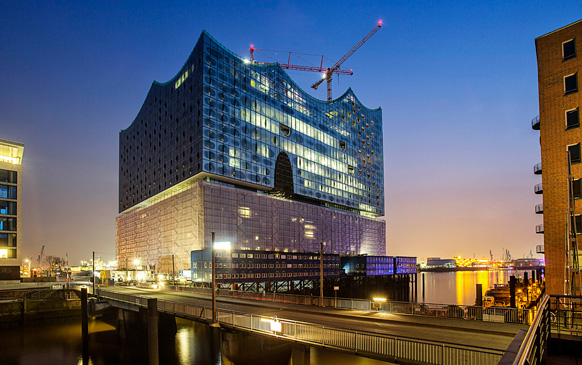
The city is also the home of Montblanc’s flagship store, since the purveyor of finely crafted writing instruments, jewellery and high-end timepieces originated in Hamburg. All of the firm’s pens are manufactured locally, and this year marks the 90th anniversary of the legendary Meisterstück writing instrument.
HERITAGE hotels
Adjacent to the main retail area sits the Fairmont Hotel Vier Jahreszeiten (“four seasons”) — the only hotel located on the Inner Alster. The hotel is classic luxury, and immaculately fuses contemporary flourishes within its ageing exterior. The confusingly branded hotel dates back to 1897, at a time when winter travel was at a minimum, hence the “four seasons” moniker to trumpet the novelty of its year-round opening.
A flurry of work is currently underway in the 117-year-old property. All 156 guestrooms are due to be revamped by early next year, retaining their plush pale-blue fabrics and ornate furnishings, but with added technological mod-cons and updated bathrooms. The hotel has described its renovations as “open-heart surgery”, given that the property is alive and kicking while important restoration work is underway. This summer season saw the addition of a refreshed rooftop area, which neatly complements the urban wellness facilities on the hotel’s upper floors.
The hotel’s foremost eatery, Haerlin Restaurant, also happens to be one of the top gourmet highlights in Hamburg. The two-Michelin-star establishment has chef Christoph Rüffers at the helm, serving up a Mediterranean and French-influenced menu with a magnificent view of the lake. Guests also have the atmospheric Art Deco masterpiece, Jahreszeiten Grill, which offers traditional Hanseatic fare, made from locally sourced, seasonal ingredients.
Tucked away, adjacent to the open-plan kitchen area, the hotel has added an über-contemporary bespoke dining lounge. Affectionately called “the butchery”, the space is finished with raw, thick woods, colourful tiles and the bust of a deer. It’s promised that clientele get VVIP treatment in this exclusive enclave. Up top, the open-air deck gives a panoramic view of the city skyline, which is marked by the upcoming opera house.
Hamburg has had a 336-year love affair with the opera — ever since Hanseatic merchants founded a music theatre between the Inner Alster’s Jungfernstieg and the Colonnaden — so Hamburg’s populace are growing impatient for the completion of the new Elbphilharmonie Hamburg, which will be one of the city’s tallest buildings at 110 metres. The facility was due to open in 2010, but won’t be hosting performances until 2017. In the meantime, the Westin Hamburg is due to open within the complex in October 2016.
The city has myriad other hotels in the works, but already possesses some compelling stalwarts. Hotel Atlantic Kempinski Hamburg, or simply ‘The Atlantic’, is a memorial to the maritime heritage of the Hanseatic hub. The capacious building houses 30 suites, but all pale in comparison to the hotel’s premier offering. The Atlantic Suite is a stately apartment that remains the choice of Saudi royalty, Hollywood A-listers and business titans. Thai royalty have also frequented the EUR 7,500 ($10,022)-a-night suite, which is unsurprising as the Thai Crown’s holding firm has a majority stake in the Swiss-headquartered hotel chain.
The hotel was initially developed as a waypoint for cruise liner passengers, and a nautical feel is retained from lobby to landing. Even the staircase that straddles reception is reminiscent of the Titanic, and would be an apt stage for Jack and Rose to play out their tryst. Exclusively for the eyes of hotel guests is the mysterious loft space, packed with artefacts from the hotel’s history. The attic is chock-full of typewriters, vintage posters, instruments, garments and other delights that appear as a treasure trove of theatrical memorabilia.
But the city itself is a memorial, teeming with a rich history, vibrant present and a bright future. Its 2,300 or so bridges are a testament to how fertile this land is, but it’s the cool confidence of the populace that makes Hamburg flourish. More chic than Berlin, but more modest than Munich, Hamburg is a refined millionaire’s haven with a modicum of alternative flavours. From the bourgeoisie to billionaires, the city has an inviting air of modesty, and whether you’re exploring retail options in your R8 or circumnavigating the Elbe by pedalo, its calm and charm will reel you in.
THE GOLDEN BOOK
EAST Hotel & Restaurant
Tel: +49 40 309 930
www.east-hamburg.de
Empire Riverside Hotel
Tel: +49 40 311 190
www.empire-riverside.de
Fairmont Hotel Vier Jahreszeiten
Tel: +49 40 34 940
www.hvj.de
Hotel Atlantic Kempinski Hamburg
Tel: +49 40 28 880
www.kempinski.com/en/hamburg/hotel-atlantic
Westin Hamburg
Tel: +49 40 2100 2000
www.westinhamburg.com









